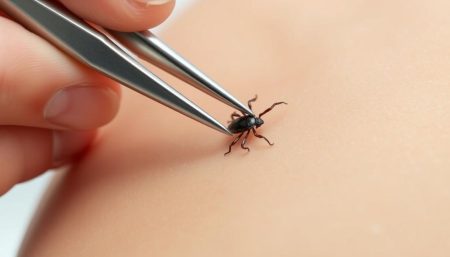When pain hits the head, finding skull pain relief is urgent. This pain can be a dull ache or sharp jabs. Understanding these causes is key to feeling better and knowing our health better.
This guide will explore many reasons for skull pain. We’ll also share ways to find relief.
We’ll look into the many causes of headaches. We’ll use trusted, medical sources to explain these causes. Skull pain can signal many health issues, each needing its own solution.
Knowing about skull pain is the first step to relief. We’ll share the latest research and expert advice. Our goal is to help you find comfort and improve your health.
What Is Pain in Skull?
Skull pain, also known as cephalgia or head pain, is a complex issue. It can come from various sources and feel different for everyone. This part will explore what skull pain feels like and its many forms.
Defining Skull Pain and Its Sensations
Skull pain can feel sharp or dull, and it can last for a short time or longer. For some, it’s a sudden, intense pain. For others, it’s a constant, dull ache that affects their daily life. Accurately describing these feelings is key to understanding and treating cranial pain.
Differentiating Between Types of Skull Pain
Skull pain can be divided into primary headaches, secondary headaches, and cranial neuralgias. Each type has its own signs and causes. Knowing this helps find the right treatment for each case.
| Type of Skull Pain | Description | Common Symptoms |
|---|---|---|
| Primary Headaches | Includes migraines, tension headaches, and cluster headaches. | Throbbing pain, photophobia, nausea |
| Secondary Headaches | Result from underlying medical conditions, such as sinus infection or high blood pressure. | Pain worsening with activity, nasal congestion |
| Cranial Neuralgias | Refers to nerve pain, such as trigeminal neuralgia. | Sharp, electric-like stabs of pain |
Knowing the differences between these types is vital for treatment. It’s also important to remember that head pain can signal many issues. From simple tension headaches to complex neurological problems, understanding the cause is key to effective treatment.
Common Causes of Skull Pain
Understanding what causes skull pain is key to fixing it. Tension headaches and things outside of us play big roles.
Tension Headaches and Cranial Pressure
Tension headaches feel like a tight band around your head. They’re the most common headache type and a big cause of skull pain. They often make your forehead and scalp feel tight.
Stress, not enough sleep, and bad posture can make these headaches worse. This leads to more skull pain.
External Factors Influencing Skull Discomfort
Things outside of us can also cause skull pain. Sudden weather changes or being at high altitudes can cause sinus pressure and headaches. Also, staring at screens for too long, in dim light, can make your skull hurt more.
Working in a bad posture for a long time can also hurt your skull. This can make your pain worse and more frequent.
- Stress and anxiety can make skull tension worse.
- Not drinking enough water can also lead to more headaches.
To fight these issues, we need to take steps to prevent them. Making ergonomic changes, taking breaks from screens, and managing stress can really help.
Exploring the Connection Between Migraines and Skull Pain
Migraines are a common and severe headache that affects many worldwide. They can be very intense and happen often. New research in neurology shows how migraines lead to skull pain. This section aims to explain this complex link, helping us understand and manage it better.
The main symptom of a migraine is intense pain on one side of the head. This pain can spread to the whole skull. It’s important to know how this happens, as it can make the pain worse.
- Physiological Reactions: Migraines often cause light sensitivity, nausea, and dizziness. These reactions make the pain feel worse across the skull.
- Trigger Factors: Stress, lack of sleep, and certain foods can start both migraines and skull pain. This can make the pain last longer.
- Judicious Management: Treating migraines early can stop them from becoming severe skull pain. This shows why quick action is key.
Looking closely at these connections is vital for both patients and doctors. It helps create better treatment plans. Below is a table showing common triggers and symptoms of both skull pain and migraines:
| Trigger of Pain | Migraine | Skull Pain |
|---|---|---|
| Stress | High | Moderate |
| Lack of Sleep | High | High |
| Dietary Factors | Varies | Low |
| Environmental Factors | Moderate | Moderate |
This table shows the shared and unique factors in migraine and skull pain. Knowing these details helps manage the conditions better. It also lets people plan ahead and find ways to prevent these pains.
Less Common Causes of Cranial Pain
While migraines and tension headaches are common, there are other causes of skull pain. These include neurological disorders, infections, and systemic diseases. These can cause a lot of discomfort. Knowing about these can help us understand more about cranial health issues.
Neurological Disorders and Related Skull Pain
Neurological disorders can cause pain in the skull. Examples include trigeminal neuralgia and temporal arteritis. These conditions can be very painful and affect daily life a lot.
Trigeminal neuralgia causes severe, shooting pain in the face and skull. It affects the trigeminal nerve, which is widespread in the head. Temporal arteritis causes inflammation in the temples. It leads to headaches and pain in the skull.
Impact of Infections and Systemic Diseases
Infections can also cause skull pain. Meningitis, for example, is an inflammation of the brain and spinal cord membranes. It often leads to headaches and pain in the skull. Systemic diseases like lupus and giant cell arteritis can also cause headaches.
| Condition | Impact on Skull | Common Symptoms |
|---|---|---|
| Meningitis | Inflammation of brain membranes | Severe headache, fever, neck stiffness |
| Lupus | Autoimmune systemic disease | Chronic headaches, joint pain, fever |
| Giant Cell Arteritis | Inflammation of arterial walls | Temporal headaches, jaw claudication |
Learning about these less common causes helps us better understand and treat skull pain. It leads to a more complete care plan for those affected.
When to Seek Medical Attention for Head Pain
Head pain is often seen as a normal discomfort. But, knowing when it’s time to see a doctor is key. Ignoring signs of serious conditions can lead to serious health problems. This part explains when you should see a healthcare professional.
There are clear signs that mean you need medical attention right away. If you notice any of these symptoms, get help fast:
- Sudden, severe headache like a thunderclap
- Headache with fever, stiff neck, confusion, seizure, double vision, weakness, numbness, or trouble speaking
- Headache after a head injury, getting worse
- A chronic headache that changes in pattern or intensity
- Headache that gets worse after coughing, exertion, straining, or sudden movement
These symptoms could mean serious conditions like meningitis, brain tumors, or hemorrhage. Don’t ignore them. Getting medical attention quickly helps diagnose and treat these conditions effectively.
Be mindful: Not all head pain is serious. But, listening to your body is important. Regular check-ups and talking to your doctor about symptoms help keep you healthy.
Symptoms Associated With Pain in Skull
When you feel pain in your skull, it’s important to watch for other symptoms. These signs might point to serious conditions. Spotting these warning signs helps you understand the underlying causes of the pain. It also helps you know what medical action to take.
Recognizing Warning Signs of Serious Conditions
Some symptoms need your immediate attention. Look out for sudden or severe headaches, vision changes, trouble speaking, and balance issues. These could mean serious problems like strokes or severe infections. You should see a doctor right away.
Correlation Between Symptoms and Underlying Causes
Knowing how symptoms relate to possible causes helps doctors diagnose faster and more accurately. For instance, a throbbing headache and light sensitivity might mean a migraine. A sharp pain on one side could point to neurological issues.
- Persistent nausea or vomiting – often linked with brain pressure changes
- Visual disturbances – may indicate pressure or inflammation in the cranial cavity
- Dizziness – can be caused by a range of issues from benign vertigo to more severe brain injuries
Telling your doctor about these symptoms clearly is key. It helps them find serious underlying causes and choose the best treatment.
Diagnostic Methods for Skull Pain
Diagnosing and treating skull pain needs advanced methods. These include medical imaging and laboratory tests. They help find the cause of pain and plan the best treatment.
Medical Imaging Techniques and Pain Localization
Medical imaging is key in finding skull pain causes. MRI and CT scans show detailed images of the skull and brain. They help doctors find where the pain is coming from.
These tools also spot structural problems and track disease progress. This is important for managing pain.
Laboratory Tests to Determine Pain Causes
Laboratory tests add to medical imaging by giving biochemical data. Blood tests, for example, show signs of infection or inflammation. This is useful when imaging scans don’t show everything.
| Diagnostic Method | Purpose | Details |
|---|---|---|
| CT Scan | Structural Analysis | Provides detailed cross-sectional images of the skull to identify fractures or anomalies. |
| MRI | Soft Tissue Evaluation | Offers high-resolution images of brain tissue to detect tumors, inflammation, or vascular irregularities. |
| Blood Tests | Systemic Assessment | Helps detect infections, inflammation markers, and other biochemical indicators of disease. |
Using medical imaging and laboratory tests together is vital. This combination makes diagnoses more accurate. It also leads to more effective treatments, improving patient care for skull pain.
Pain in Skull: The Role of Stress and Anxiety
The link between stress, anxiety, and skull pain is key in managing cephalgia. Knowing how these factors affect skull pain relief is vital for good treatment plans.
Stress and anxiety change brain chemistry and cause muscle tension. This tension can lead to skull pain, making daily life hard.
It’s important to know when stress causes skull pain. You might feel a tight band around your head or a throbbing pain. These feelings get worse when you’re stressed.
- Increased heart rate
- Muscle tension in the neck and head
- Sensitivity to light or sound
To find skull pain relief, you must tackle anxiety and stress. Using both mind and body treatments can improve your health and lessen pain.
| Technique | Benefit | Relation to Stress/Anxiety |
|---|---|---|
| Mindfulness Meditation | Reduces muscle tension | Directly reduces stress levels |
| Regular Exercise | Increases endorphins, natural painkiller | Helps manage anxiety and stress |
| Adequate Sleep | Decreases sensitivity to pain | Improves resilience to stress |
In summary, managing stress and anxiety is key to skull pain relief. By using methods to reduce these factors, people can live better and control their pain better.
Pharmacological Treatments for Skull Ache Relief
Pharmacological treatments help with both temporary and chronic skull aches. They range from over-the-counter meds to prescription drugs. Each is chosen based on the severity and how often symptoms occur.
Over-The-Counter Medications for Immediate Relief
For quick relief, over-the-counter drugs are a good start. NSAIDs like ibuprofen and acetaminophen are common. They help with pain and swelling. You can find them at pharmacies and use them as directed.
Prescription Options for Chronic Skull Pain
If your pain is severe or lasts a long time, your doctor might suggest prescription drugs. These can include stronger NSAIDs or opioids. It’s important to follow your doctor’s advice to avoid problems.
Other options might include muscle relaxants or antidepressants. This is if your pain is linked to your nerves or mind.
Natural and Alternative Remedies for Cephalgia
More people are looking for non-drug ways to handle headaches. They’re turning to natural remedies and alternative remedies for help. These methods not only ease pain but also improve overall health without needing drugs. We’ll examine herbal supplements and relaxation methods backed by science.
Herbal Supplements Known to Ease Head Pain
- Ginger: Known for its anti-inflammatory properties, ginger can help reduce headache symptoms.
- Peppermint Oil: Applied topically, peppermint oil can soothe tension headaches due to its cooling effects.
- Feverfew: Traditionally used for migraine prevention, feverfew is a common herbal supplement for headache relief.
Relaxation Techniques and Their Effectiveness
Yoga and meditation are top relaxation techniques for easing head pain. They not only lessen headache frequency and severity but also help manage stress. Stress is a big headache trigger.
| Technique | Description | Effectiveness |
|---|---|---|
| Meditation | Focusing the mind to achieve a tranquil state. | Highly effective in reducing stress-related headaches. |
| Yoga | Combines physical postures, breathing exercises, and meditation. | Helps in relaxation and pain management. |
| Progressive Muscle Relaxation | Technique to relax muscles through a series of tensing and relaxing exercises. | Beneficial for tension headaches. |
In conclusion, trying alternative remedies and using relaxation techniques can greatly help manage cephalgia. They can even reduce its impact.
The Role of Physical Therapy in Managing Skull Pain
Physical therapy is proving to be a game-changer for head pain management. It uses exercises and manual techniques to tackle the main causes of skull pain. This can help cut down on the use of drugs and avoid surgery.
Physical therapists create custom plans to ease pain and boost mobility and strength. These methods work well for those with long-term pain from muscle and bone issues in the neck.
- Targeted exercises improve posture, which can often be a contributing factor to head pain.
- Manual therapy techniques such as massage, mobilization, and manipulation help to decrease tension and improve circulation in the areas contributing to pain.
- Educational strategies are employed by therapists to help patients understand their condition better, leading to optimized self-care.
Experts in physical therapy suggest a mix of treatments based on the patient’s pain type. This method helps manage pain and tackles the underlying problems to stop future pain.
For many, physical therapy is key to managing head pain. It’s a safer and more lasting solution than relying on drugs for a long time.
Lifestyle Changes to Prevent Recurrent Skull Pain
Making lifestyle changes is key to avoiding skull pain. Focus on ergonomics and diet to improve your life. This section will guide you on how to prevent skull pain through occupational health and nutrition.
Importance of Ergonomics in Reducing Skull Pain
Ergonomics is vital in stopping skull pain, mainly for those working long hours. Making your workspace better can change your life. Here are some ergonomic tips:
- Adjust the computer monitor to eye level to reduce neck strain.
- Invest in an ergonomic chair that supports the lower back and encourages good posture.
- Implement frequent short breaks to alleviate prolonged physical stress.
These changes help avoid pain and keep your muscles healthy over time.
Dietary Adjustments to Avoid Common Triggers
Changing what you eat is also important for managing skull pain. Eating foods rich in magnesium and B vitamins can help. Here are some good food choices:
| Food | Benefit |
|---|---|
| Leafy greens (e.g., spinach, kale) | High in Magnesium |
| Whole grains | Rich in B Vitamins |
| Fatty fish (e.g., salmon, mackerel) | Contains Omega-3 Fatty Acids |
Eating these foods can boost your health and stop skull pain caused by diet.
Pain in Skull: Identifying Your Pain Triggers
For those with chronic skull pain, finding out what causes it is key. Knowing what sets off your pain helps you change your life to reduce it.
Keeping a headache diary is a smart move. Write down when, how long, and how bad the pain is. Also, note what was happening around you. Things like stress, food, lights, and weather can trigger pain.
- Document each instance of skull pain
- Track environmental conditions, dietary intake, stress levels
- Note the duration and severity of pain
Looking at your diary can also be helped by learning from others. Check out this article to see how allergies might cause pain. It’s something many people don’t think about.
| Trigger Type | Common Triggers | Possible Solutions |
|---|---|---|
| Environmental | Weather changes, bright lights | Adjust indoor lighting, monitor weather forecasts |
| Dietary | Caffeine, alcohol, artificial sweeteners | Limit intake, maintain balanced diet |
| Behavioral | Lack of sleep, high stress | Improve sleep hygiene, practice stress management |
Understanding your headache diary can help you avoid pain triggers. It also helps you talk better with doctors. This way, you can get treatments that really work for you. The goal is to find what works best for you to feel better.
Understanding the Impact of Hydration on Skull Discomfort
Drinking enough water is key for our health, helping prevent dehydration headaches. It keeps our body’s functions normal and affects how comfortable our skull feels.
Dehydration Headaches and Prevention Strategies
Dehydration headaches happen when we lose more water than we drink. This reduces blood flow and oxygen to the brain. It makes the brain pull away from the skull, causing pain.
This pain gets worse if we don’t drink enough water.
- Drink water regularly, even when you’re not thirsty.
- Drink more water in hot weather or when you’re active.
- Eat foods that help keep you hydrated, like fruits and veggies.
Proper Hydration Practices for Skull Pain Sufferers
For those with frequent skull pain, staying hydrated is essential. It’s not just about drinking water. It’s about making hydration a part of your daily routine.
| Time of Day | Suggested Hydration Practice | Benefits |
|---|---|---|
| Morning | Start with a glass of water upon waking | Activates internal organs and helps prevent headaches |
| Midday | Sip water throughout the day, not just at meal times | Maintains hydration levels consistently, reducing the risk of headaches |
| Evening | Avoid caffeine and alcohol as they can lead to dehydration | Ensures hydration before sleep, which is important for recovery |
Knowing how dehydration affects our skull can help us avoid pain. By staying hydrated, we can improve our overall well-being.
Interventional Procedures for Persistent Skull Pain
For those with chronic skull pain, interventional procedures offer a new hope. These treatments are made to stop pain signals before they hit the brain. This gives relief to those who have been suffering for a long time.
Nerve blocks and Botox injections are key treatments for chronic skull pain. Nerve blocks use anesthetic to block pain signals. Botox, known for beauty treatments, relaxes muscles that cause pain.
| Procedure | Description | Benefits | Risks |
|---|---|---|---|
| Nerve Blocks | Anesthetic is injected near pain-transmitting nerves. | Reduces pain for weeks to months. | Potential for temporary numbness or infection. |
| Botox Injections | Botulinum toxin is used to relax muscles causing pain. | Can decrease pain frequency and intensity. | Rare occurrences of muscle weakness or injection site reactions. |
These procedures need careful planning and knowledge of the head and neck. They are safe but can have risks. So, they’re used when other treatments fail.
It’s vital for patients with chronic skull pain to see a specialist. This ensures the right treatment is chosen.
Supporting Loved Ones Dealing with Skull Pain
Seeing a loved one in pain can feel overwhelming. But, your support is key in their fight against pain. You can offer emotional, physical, or practical help. This support can greatly improve their life.
It’s vital to be empathetic and patient with them. Chronic pain affects them both physically and mentally. Understanding this can help you support them better.
Talking openly about their needs is important. Listening and respecting their boundaries helps create a strong support system. You can help with appointments, medication, and be there during tough times. These actions show you care and help them feel better.
Learning about their condition is also important. It shows you’re committed to their health and gives you ways to help. Feeling understood can greatly improve their mental health. A strong support system is essential for those with chronic pain.
FAQ
Q: What causes pain in the skull?
A: Skull pain can come from many sources. This includes tension headaches, migraines, and cranial neuralgias. Infections or diseases can also cause it. Stress, anxiety, dehydration, poor posture, and eye strain can add to the discomfort.
Q: How can I differentiate between a migraine and other types of headache?
A: Migraines have a pulsating pain on one side of the head. They also make light and sound hurt. You might feel sick to your stomach and throw up.
Other headaches, like tension headaches, feel dull. They hurt across the forehead or the back of the head and neck.
Q: When should I seek medical attention for skull pain?
A: See a doctor if your skull pain is severe or lasts a long time. If it gets worse fast, or if you have confusion, fever, stiff neck, or vision problems. Also, after a head injury, seek help.
Q: Are there any natural remedies for cephalgia?
A: Yes, natural remedies can help. Herbal supplements, meditation, yoga, and drinking enough water are good options. Always talk to your doctor before trying new remedies.
Q: Can lifestyle changes help prevent recurrent skull pain?
A: Definitely, making lifestyle changes can help. Work ergonomics, avoiding headache triggers in your diet, regular exercise, and good sleep are key. These can reduce headache frequency and severity.
Q: How does physical therapy help manage head pain?
A: Physical therapy can help by improving posture and relieving muscle tension. It also increases range of motion and strengthens muscles. Exercises and manual therapy target pain areas.
Q: What are interventional procedures for chronic skull pain?
A: For chronic pain, procedures like nerve blocks or Botox injections might be used. These aim to stop pain signals. Discuss these options with a pain management specialist.


















